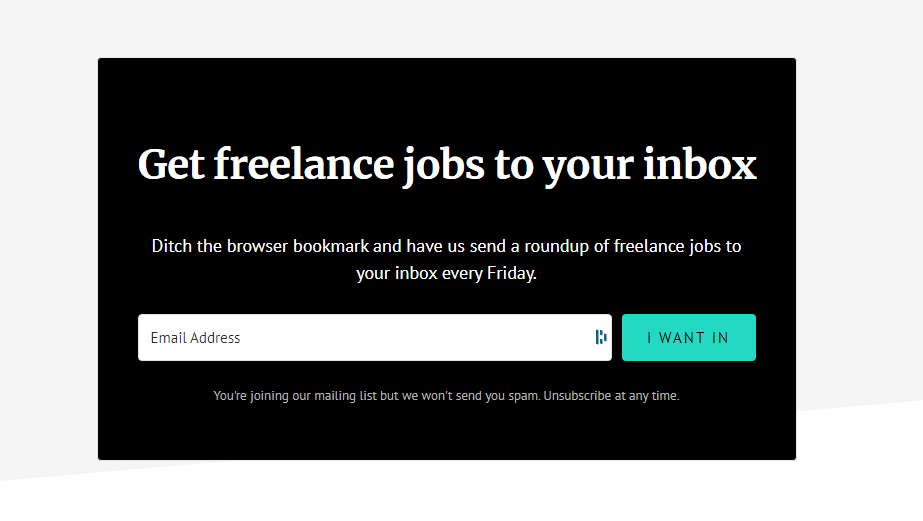
If lead generation is a goal (which it should be), you’ve undoubtedly spent a lot of time and effort towards generating website traffic. And while increasing site traffic is a terrific goal to achieve, what you do with that site traffic is even more important.
It isn’t enough to just send people to your site. You have to make sure your site is set up to capture leads so you can start growing your email list and sending email campaigns successfully. This is where website forms come in.
Website forms are essentially sign-up forms, and there are two major kinds: online forms and pop-up forms. They’re an indispensable part of your lead generation and sales strategy, as essentially, they’re where those strategies truly begin. The way you design and use your sign-up forms dictates the rate at which your email lists grow and, in turn, dictates how successful you can be at converting that list into paying customers.
In this article, we’ll discuss the best practices for using sign-up forms so you can use them to effectively grow your email list.
What’s an Email Sign-Up Form?
First things first, let’s dive into what sign-up forms are a bit more.
Email sign-up forms refer to the forms that pop up or are embedded on your website pages to collect the email addresses of potential customers and leads. Generally, the form has fields where the web visitor can add their name and email address, a CTA button, a headline, and a description.
While the form’s intention is straightforward, convincing visitors to hand over their personal details isn’t. Thankfully, adhering to these best practices will help you move closer to achieving that goal.
Best Practices For Using Email Sign-Up Forms
1. Place them on High-Traffic Pages
The more people that can find your sign-up form, the better your chances are of building your email list. For this reason, place your forms on high-traffic pages and, most importantly, optimize the placement of the form on the page.
Keep in mind the page could be getting hundreds of visitors daily, but only a few make it to the bottom of the page. If you place the sign-up form at the bottom, it may not get you as many results as it would were it to pop out from the side or follow readers as they scroll.
Remember, there are many spots where you can place the sign-up forms:
- Top of the page
- Bottom of the page
- In the sidebar
- Within the text
- As a pop-up triggered by a user action (such as exit intent)
Rather than place the form randomly, do A/B testing to determine the placements that work best for each page and audience.
2. Grab Visitors with a Headline
Getting eyeballs on the sign-up form is just but a piece of the jigsaw puzzle. Another important piece is convincing these people to read the form content and take the desired action. To do so, create a catchy headline – something that intrigues the readers and makes them yearn for what you’re offering in exchange for their email.
Check out the sign-up form below. The headline is a sticker for anyone who’s pursuing passive income. We like how the website teases readers with definite figures ($50,000+ per month). Handing over your email for that kind of promise seems like a pretty beneficial exchange.
3. Make the Value Exchange Clear
Let’s say, for example, that the headline has caught the reader’s attention. To sell them on the idea and convince them to sign up, you have to define what’s in it for them. Web visitors don’t just give you their email because the headline is catchy. They do so because they inherently want to tap into your knowledge or get real value in exchange.
The example above clearly outlines the value exchange. The readers know that once they sign up, they will get a free email course that can help them create a blog churning $50,000+ per month in revenue. That’s an irresistible offer.
Another example is from Peak Freelance below.
A guaranteed roundup of freelance jobs every week makes passing this up extremely hard for freelance job seekers.
4. Keep it Simple
While the headline and description play a significant role in convincing the reader to sign up, they don’t give you the license to cram the form with all sorts of information. It’s always good to keep it simple — use the fewest words possible to sell your value proposition.
This applies to the form fields, too. If you ask for too much information from the readers, chances are good that most of them won’t oblige. Studies have found that eliminating data fields and leaving only the absolute necessary fields can significantly increase the subscriber rate.
Zendesk has created a simple sign-up form that only asks for visitors’ emails. This does a great job of getting people subscribed so they can obtain other details, such as name and address, in their subsequent email messages.
5. Mind User Privacy
In the wake of rampant cybercrimes, no one wants to leave their email on websites they don’t trust. Today’s users are conscious of their data privacy, and unless they are sure about how you intend to use the information, they will not complete the form.
This sign-up form from Remote.com goes the extra mile to explain how they will use the user’s information and requests the user’s consent to use the information.
Transparency goes a long way towards not only building a relationship based on trust but in encouraging users to provide you with what you need to build your list effectively.
Next time you add a form to your website, keep these tips in mind, and you’re sure to see your email list steadily grow. And, if you want a simple email marketing solution that comes with a sign-up form builder for your site, sign up for a free Benchmark Email account.










